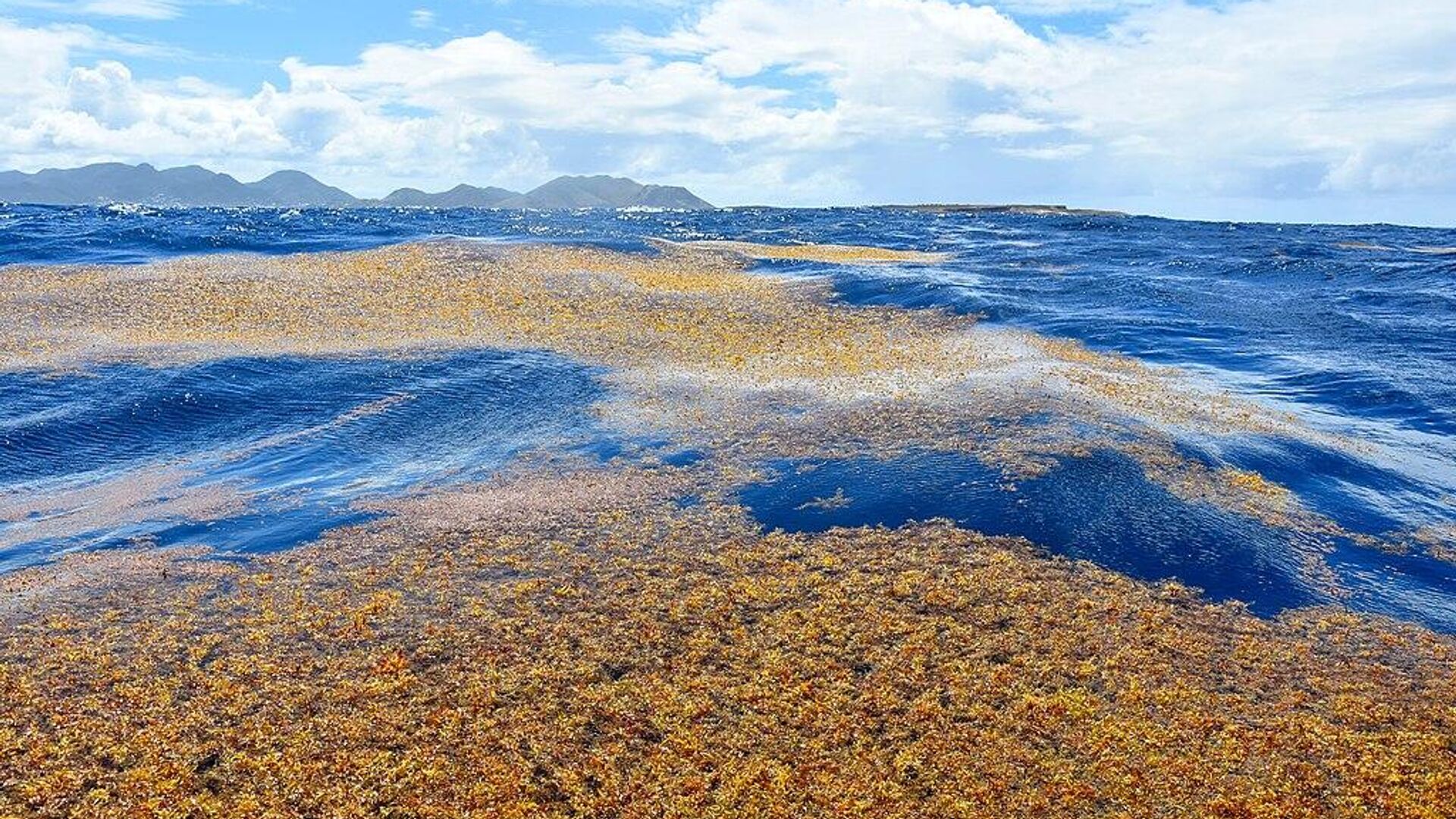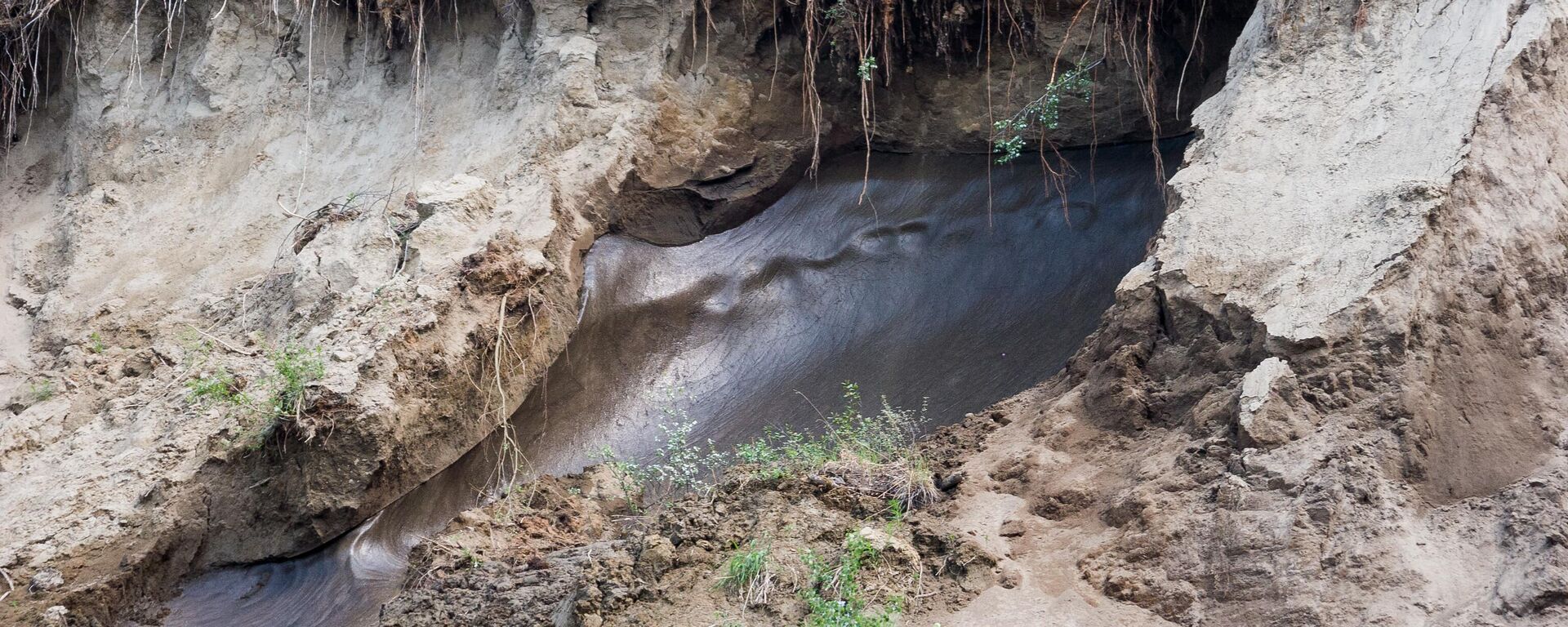https://sputnikglobe.com/20230604/flesh-eating-bacteria-threat-may-not-be-present-in-atlantic-seaweed-near-us-coast-1110901672.html
'Flesh-Eating Bacteria Threat' May Not Be Present in Atlantic Seaweed Near US Coast
'Flesh-Eating Bacteria Threat' May Not Be Present in Atlantic Seaweed Near US Coast
Sputnik International
As parts of a large mass of seaweed, chock-full of plastic, make their way to the shores of Florida, researchers and media outlets have voiced concerns about dangerous bacteria that may be lurking in that clump of waste and organic matter.
2023-06-04T13:23+0000
2023-06-04T13:23+0000
2023-06-04T13:23+0000
beyond politics
science & tech
atlantic ocean
seaweed
bacteria
https://cdn1.img.sputnikglobe.com/img/07e7/06/04/1110901976_0:54:1024:630_1920x0_80_0_0_d448c24dc40309b4fd1fded4a04f3ab7.jpg
A giant bloom of seaweed in the Atlantic Ocean made headlines in recent weeks, in no small part due to its prodigious size and the fact that it may harbor microbial life potentially harmful to humans.The seaweed in question is called Sargassum, with patches of this brown algae currently stretching across the Atlantic, from the Gulf of Mexico to the western coast of Africa, with researchers from the University of South Florida estimating its current mass at about 13 million tons.With patches of this seaweed already washing up on the Sunshine State’s beaches, a new study published in the journal Water Research last month warns that bacteria in the genus Vibrio, potentially dangerous to humans, appear to thrive in the Sargassum.Marine biologist Linda Amaral-Zettler from the Royal Netherlands Institute for Sea Research, who co-authored the study in question, told media that the Vibrio “can and does colonize both plastic and Sargassum,” and that this bacteria “can carry genes that are potentially pathogenic."While Amaral-Zettler went on to suggest that beachgoers “need to be responsible” and realize the hazards involved when dealing with Sargassum, another scientist who was not involved in this research pointed out that many Vibrio species are actually harmless.The scientist, microbial ecologist Hidetoshi Urakawa from the Florida Gulf Coast University, noted that the aforementioned study apparently did not find in the Sargassum samples any “highly pathogenic species of Vibrio that typically infect humans,” as the media outlet put it, though he did suggest that the public should be aware of the potential danger associated with this seaweed.Jae Williams, a spokesperson for the Florida Department of Health, has also reportedly said that people “do not need to go play or recreate in the Sargassum,” and that they should stay away from this algae if they see it.
https://sputnikglobe.com/20230311/revived-ancient-zombie-virus-from-siberian-permafrost-hasnt-lost-its-touch-study-warns-1108276690.html
atlantic ocean
Sputnik International
feedback@sputniknews.com
+74956456601
MIA „Rossiya Segodnya“
2023
News
en_EN
Sputnik International
feedback@sputniknews.com
+74956456601
MIA „Rossiya Segodnya“
Sputnik International
feedback@sputniknews.com
+74956456601
MIA „Rossiya Segodnya“
vibrio bacteria, sargassum bloom
vibrio bacteria, sargassum bloom
'Flesh-Eating Bacteria Threat' May Not Be Present in Atlantic Seaweed Near US Coast
As parts of a large mass of seaweed, chock-full of plastic, make their way to the shores of Florida, researchers and media outlets have voiced concerns about dangerous bacteria that may be lurking in that clump of waste and organic matter.
A giant bloom of seaweed in the Atlantic Ocean made headlines in recent weeks, in no small part due to its prodigious size and the fact that it may harbor microbial life potentially harmful to humans.
The seaweed in question is called Sargassum, with patches of this brown algae currently stretching across the Atlantic, from the Gulf of Mexico to the western coast of Africa, with researchers from the University of South Florida estimating its current mass at about 13 million tons.
With patches of this seaweed already washing up on the Sunshine State’s beaches, a new study published in the journal Water Research last month warns that bacteria in the genus Vibrio, potentially dangerous to humans, appear to thrive in the Sargassum.
Marine biologist Linda Amaral-Zettler from the Royal Netherlands Institute for Sea Research, who co-authored the study in question, told media that the Vibrio “can and does colonize both plastic and Sargassum,” and that this bacteria “can carry genes that are potentially pathogenic."
"There have been some pretty horrific infections caused by Vibrio. Their flesh-eating potential is rare, but it's real," she said as quoted by one media outlet.
While Amaral-Zettler went on to suggest that beachgoers “need to be responsible” and realize the hazards involved when dealing with Sargassum, another scientist who was not involved in this research pointed out that many Vibrio species are actually harmless.
The scientist, microbial ecologist Hidetoshi Urakawa from the Florida Gulf Coast University, noted that the aforementioned study apparently did not find in the Sargassum samples any “highly pathogenic species of Vibrio that typically infect humans,” as the media outlet put it, though he did suggest that the public should be aware of the potential danger associated with this seaweed.
Jae Williams, a spokesperson for the Florida Department of Health, has also reportedly said that people “do not need to go play or recreate in the Sargassum,” and that they should stay away from this algae if they see it.



